Affiliate links on Android Authority may earn us a commission. Learn more.
Report: Global LTE speeds still stationary, but coverage improves
Published onFebruary 20, 2018
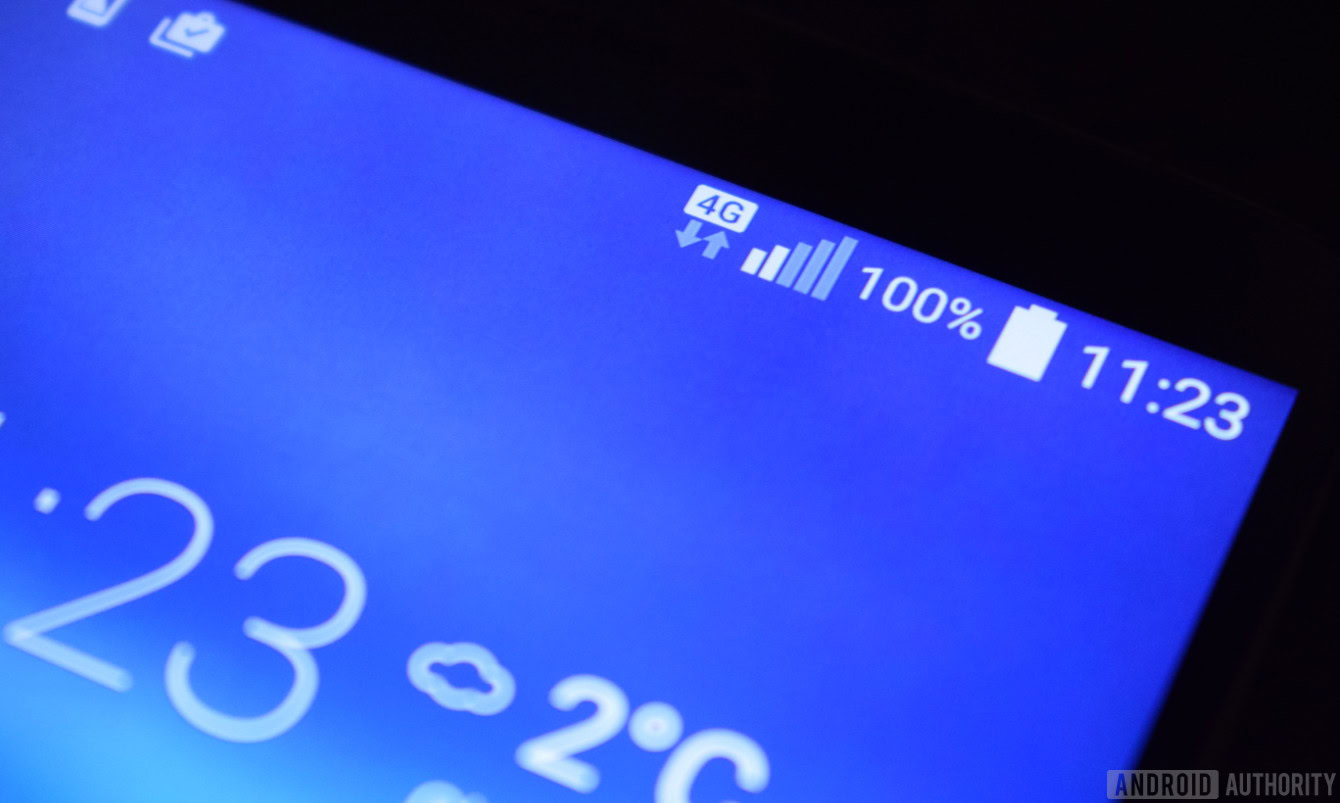
OpenSignal just published its latest look into the state of the world’s 4G LTE networks. The report highlights a few key trends over the past quarter, based on 58,752,909,949 measurements from almost 5 million test devices (from 11 more countries than last year’s report) collected between October 1st and December 29 2017. Most notably, it points to the stagnation in data speeds in the most developed markets.
The fastest countries, like Singapore, Norway, and South Korea among others, are no longer seeing data speed gains. In some instances their speed is slightly dropping due to increasing demand.
Speeds seem to cap out around 45 Mbps on average, with little to no improvement in well-established 4G LTE markets. However, a number of networks in these markets are now gearing up for their first Gigabit and 5G deployments, which could boost speeds longterm.
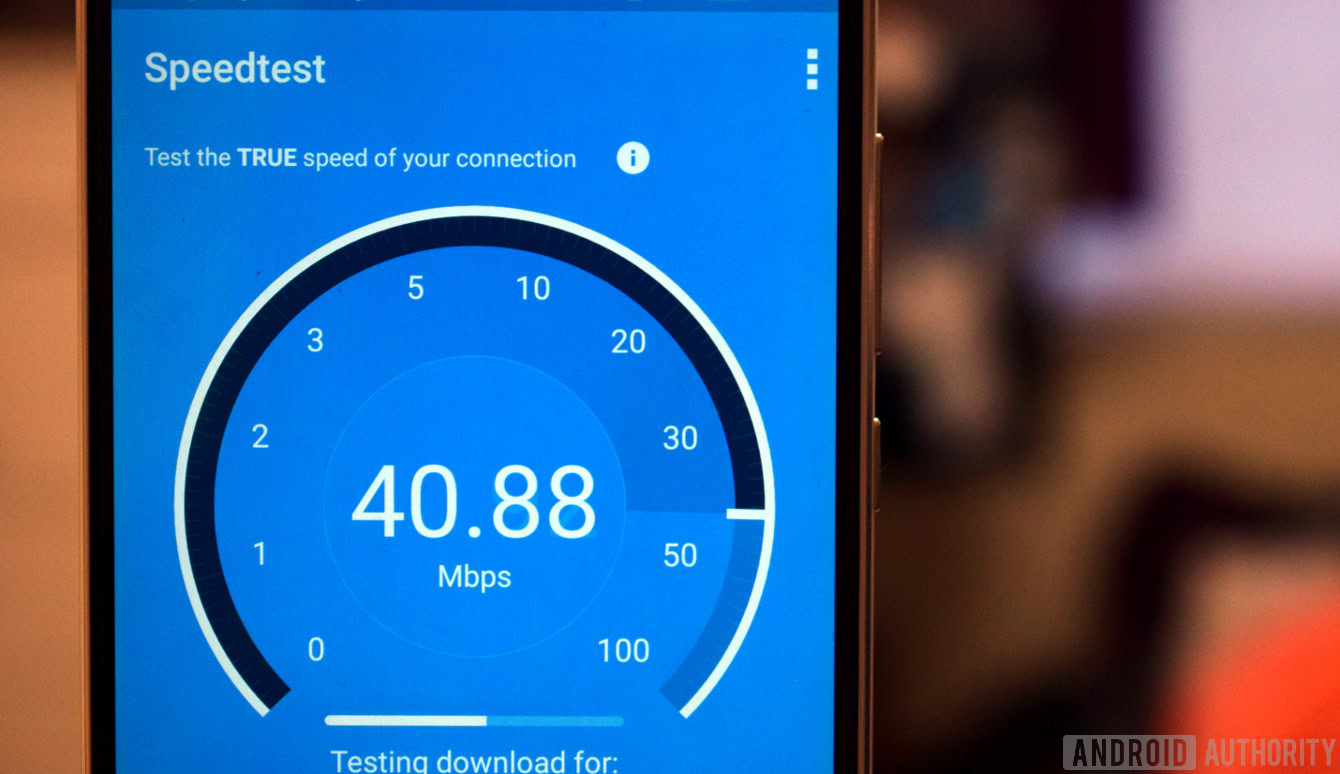
Both Europe and the North America saw average speeds improve over the past few months, in countries like the Netherlands, Spain, Canada, and the U.S.. Outside of the top 10, speeds are gradually improving. Countries like India and Indonesia are still struggling to increase speeds by much, as capacity continues to be outstripped by demand.
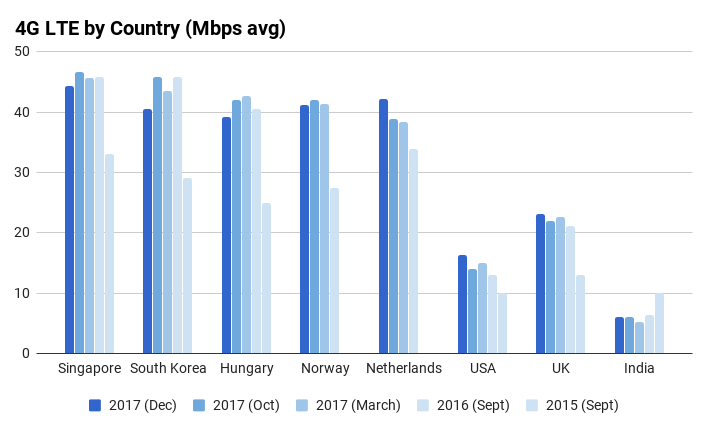
Overall global 4G LTE data speeds have stagnated over the past year or so. Marginal growth has been spread across rises and falls in various countries, but the now-wide adoption of 4G networks has left little room for the huge speed improvements seen in previous years. On the upside, backend broadband connections have improved lately around the world, hitting new highs of 14 Mbps.
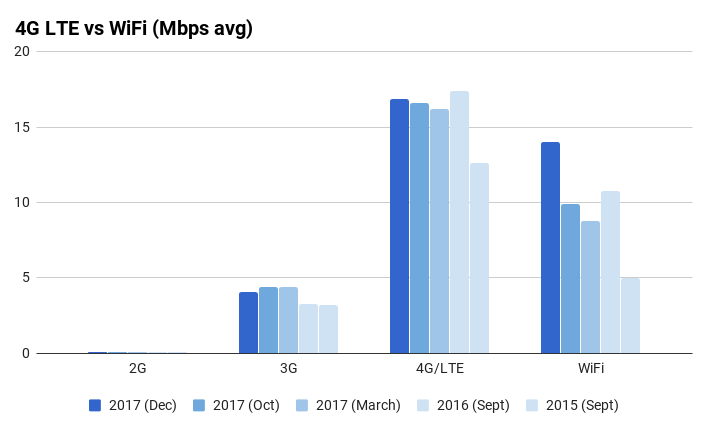
Better access to fast data
While speeds haven’t changed much, global access to 4G LTE data is at an all time high. The number of countries offering 4G LTE coverage to their customers at least 90 percent of the time is up from two to five countries and territories, and a sixth isn’t far behind.
Norway, Hong Kong, and the U.S. joined Japan and South Korea in this exclusive club in 2017, followed closely by the Netherlands on 89.6 percent. This is an important metric for OpenSignal, as it suggests strong network coverage across a range of the country’s carriers and very few coverage dead zones. OpenSignal tracks this metric by actual time spent connected to a network, rather than geographical coverage or population density, it’s a good measure of both indoor and outdoor LTE availability.
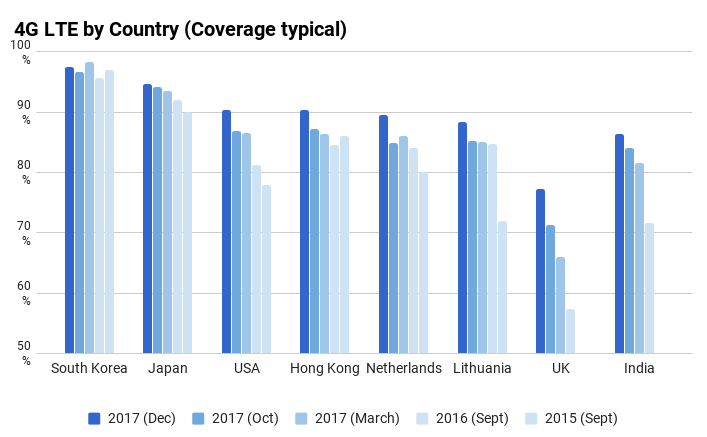
A number of other countries saw notable improvements to 4G coverage too. India continued its strong rise, up to 86 percent from around 72 percent a year before. The U.K. also solidified its coverage, growing to 77 percent, from 71 percent in the previous report and around just 60 percent at the end of 2016.
Overall 30 countries now offer 4G connections to customers at least 80 percent of the time, up from 20 at the last count. OpenSignal noted Thailand, Belgium, Latvia, Finland, Canada, Uruguay, Denmark, and Croatia all crossed the 80 percent threshold recently.
Some national carriers aren’t necessarily bringing customers faster speeds, but network infrastructure improvements are improving geographical and indoor coverage in a lot of countries.
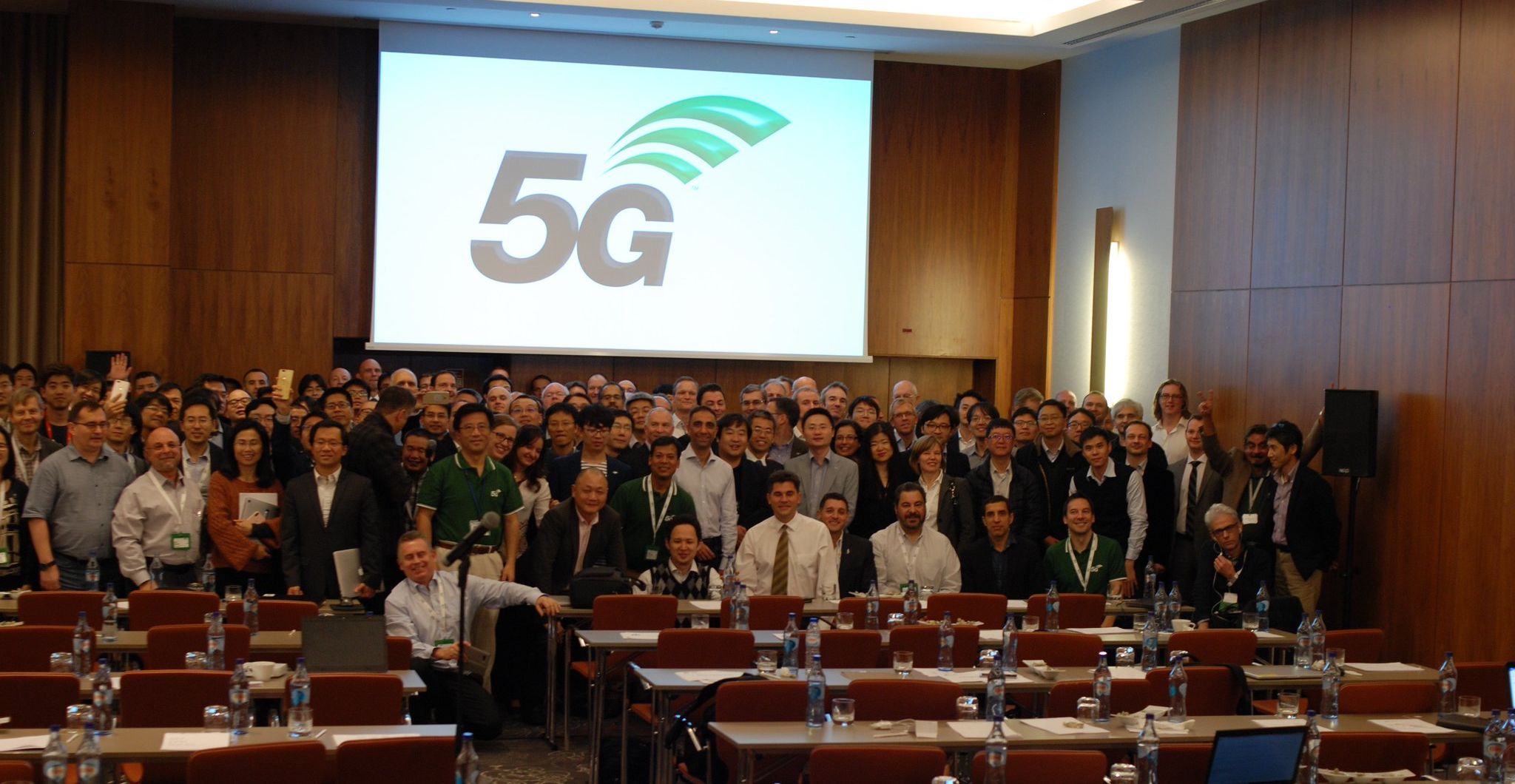
What’s to come?
Overall the report reiterates many of the global positions we’ve seen over the past couple of years. Well established networks in South Korea, Japan, Singapore, and a selection of European countries continue to lead the way with the fastest data speeds and the most comprehensive coverage. Growing markets in earlier stages of 4G LTE adoption are still predominantly located near the bottom of the rankings, but many are starting to creep up the leaderboard, particularly in coverage.
That trend is likely to continue over the next year or so, as carriers in Latin America and Southeast Asia continue to invest in infrastructure. Carriers in well established markets want to increase their speeds with LTE-Advanced and Gigabit LTE (called pre-5G by some) improvements to existing technologies. In certain regions speeds already readily exceed 50 Mbps in cities. Of course, some carriers are also gearing up to launch their first 5G networks potentially as early as 2019. These developments will likely all spur new growth in global wireless data speeds.
We’ll almost certainly see more countries breach the 40 Mbps and 90 percent coverage markers over the next two years. For a closer look at how each country performs, check out OpenSignal’s full report.